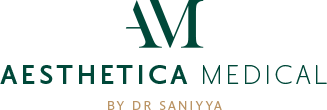INGROWN HAIRS LEEDS & CHESHIRE
WHAT ARE INGROWN HAIRS?
HOW LASER HAIR REMOVAL HELPS
MAKING THE SWITCH TO LASER HAIR REMOVAL
MORE ON LASER HAIR REMOVAL
PERSONALISED CARE
Causes of Ingrown Hairs
Ingrown hairs, medically termed Pseudofolliculitis barbae, arise when hairs curl back or grow sideways into the skin. This condition is particularly common in areas subjected to shaving, such as the face, legs, and bikini area. The primary causes include ineffective hair removal techniques, naturally curly or coarse hair, clogged hair follicles, hormonal fluctuations, certain medical conditions, and specific medications. These factors can lead to the hair failing to break through the skin surface, resulting in inflammation, redness, and sometimes infection.
Why Choose Aesthetica Medical for Your Treatment?
At Aesthetica Medical, we offer personalised care tailored to each individual's skin concerns and goals. Our team of experts, led by the highly acclaimed Dr Saniyya, employs the latest technologies and treatment methodologies to ensure the best possible outcomes. Our commitment to excellence and patient satisfaction makes us the preferred choice for those seeking effective ingrown hair treatment solutions.
Professional Treatments at Aesthetica Medical
Consultation and Diagnosis
Every treatment journey at Aesthetica Medical begins with a thorough consultation and diagnosis. Our experts take the time to understand your skin concerns, medical history, and treatment goals. This personalised approach ensures we recommend the most effective treatment options for your needs.
Our Advanced Treatment Options
We offer a range of advanced treatment options for ingrown hairs, including laser hair removal. Utilising the state-of-the-art Splendor X by Lumenis, we target hair follicles to reduce hair growth and prevent hairs from growing back into the skin. This method is safe and effective and provides long-term relief from ingrown hairs.
Frequently Asked Questions
Back to top: Ingrown Hairs Leeds
